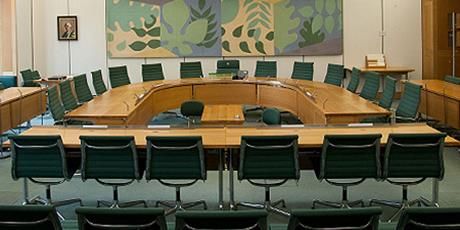
Government Select Committee Independent review of building regulations and fire safety published [July 2018]
Summary:
The catastrophic fire at Grenfell Tower in June 2017 demonstrated the clear need for an urgent and comprehensive review of our building regulations.
When the subsequent Independent Review of Building Regulations and Fire Safety, chaired by Dame Judith Hackitt, published its Final Report in May 2018, much of the media and stakeholder reaction focused on what it had not recommended: a ban on the use of materials of limited combustibility in the cladding of high-rise residential buildings.
This absence reflected an outcomes-based, non-prescriptive approach, and was the subject of much criticism, including from this Committee.
We therefore decided to hold a very short inquiry, to hear from industry representatives, fire safety experts and building owners and insurers. We wanted to discuss the conclusions and recommendations of the Independent Review, and consider the specific immediate changes needed to improve the safety of residential tower blocks, as well as how improvements could be applied more widely in the construction industry.
Following this short inquiry, our main conclusions and recommendations are as follows:
-
- Dame Judith was right to highlight the need for significant cultural change in the industry. We agree that the building regulations require simplification, that fire safety should be addressed throughout the life-cycle of a building, and that residents require a more meaningful voice to challenge fire-safety processes in their homes.
- While the Independent Review focused on high-risk residential buildings of 10-storeys or more, many of these recommendations could and should be applied to a wider range of buildings and to the construction industry as a whole.
- We want to see a system with a robust system of oversight and meaningful sanctions, but underpinned by a strong, prescriptive approach to ensure minimum standards that guarantee the safety of residents.
It is not a binary choice between having an outcomes-based system with greater accountability, robust regulatory oversight and strengthened sanctions on the one hand, and prescription on the other hand. The two are not mutually exclusive.
- If the Government is to restore public confidence in the construction industry, then it must—as a matter of urgency—tackle the conflicts of interest that exist throughout the system.
From builders choosing their own inspection services, manufacturers selecting product testers for their perceived leniency, Fire Rescue Authorities inspecting the work of their own commercial trading arms, to private sector companies’ influence over the fire safety guidance in which they have a commercial interest. Conflicts of interest are pervasive within the industry.
- The Government was right to signal its intention to ban the use of materials which are not of limited combustibility in the cladding of high-rise buildings.
- However, the ban should apply not only to new high-rise residential buildings, but also to existing buildings and those currently under construction. The ban should also apply to non-residential buildings where there is a particular and significant risk to life, such as residential homes, hospitals, student accommodation and hotels.
- We do not believe it is sufficient to solely require the use of materials of limited combustibility in cladding systems; these systems should additionally be subject to full-scale fire tests to ensure their safety.
It cannot be right for dangerous cladding to be banned from new buildings, but for it to continue to be permitted on existing buildings. The Government should fully fund the replacement of any cladding on existing buildings which had been permitted, but is subsequently banned as a consequence of the consultation.
- We need a new testing regime that has much wider industry support and can be fully trusted. The system must better reflect real-world conditions, reach near-incontestable conclusions, and be more transparent, with details of test failures and re-run tests made publicly available.
The Independent Review was right to call for a more effective testing regime. While the BS 8414 full-scale fire test has advocates, it does not command the full support of the entire industry.
- Where structurally feasible, sprinklers should be retro-fitted to existing high-rise residential buildings to provide an extra layer of safety for residents.
The Government should make funding available to fit sprinklers into council and housing association-owned residential buildings above 18 metres, and issue guidance to that effect to building owners in the private sector.
- It is clear that the ownership and responsibility of privately owned buildings is often complex. We recommend that the Government conduct an urgent review into responsibility and liability of such buildings to ensure the necessary work can be carried out for the safety of residents, which is paramount. The Government should then produce further subsequent guidance for building owners.
- The Government should also introduce a low-interest loan scheme for private sector building owners, to ensure that remedial work is carried out as quickly as possible and that costs are not passed on to leaseholders.
More than a year has passed since the Grenfell Tower fire and it is unacceptable that so many private buildings continue to have unsafe cladding. This is a difficult and complex legal situation and, while the Government says it will rule out no options, it is unclear what more they can do to compel private building owners to act.
... click HERE to continue to read the complete Report:
Ed.
